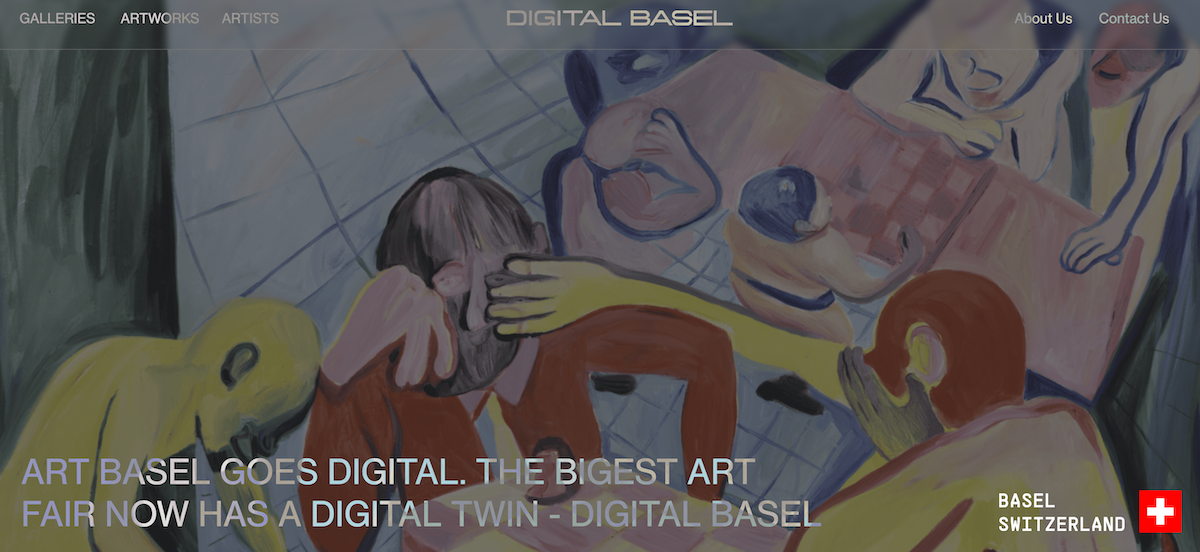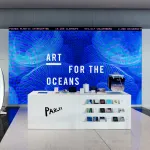
The NFT website digitalbasel.io, which launched last year and quickly provoked the ire of the world’s largest art fair conglomerate, Art Basel, has shut down. An email addressed to “Galleries, Artists, and Collectors” was sent Wednesday morning announcing the project’s collapse.
“The journey of our project has been fraught with challenges, and we must announce its conclusion,” the letter read, before stating that the project “faced misunderstandings and baseless accusations of fraudulent activities” that hindered its progress.
“Despite our relentless efforts to address these concerns and uphold our integrity, the pervasive criticism and bias from certain corners of the industry proved insurmountable,” the email continued.
In March 2023, Art Basel sent a cease-and-desist letter to Digital Basel and accused the company of copyright infringement. At the time, the Digital Basel web site described itself as “a new platform for curated digital art distribution with the opportunity to showcase artists and their work in a digital dimension” and implied a connection with Art Basel by pronouncing that “Art Basel goes digital” and that “The bigest [sic] art fair now has a digital twin – Digital Basel.”
The website claimed to sell NFT versions of paintings from galleries that often participate in Art Basel fairs including JTT, Blum & Poe, David Zwirner Gallery and Kasmin. Under a page devoted to each “participating” gallery was a list of NFT versions of physical paintings. Often times, the images were of works of art that were not for sale or listed on the corresponding gallery’s website. In one case, an NFT of David Zwirner artist Kerry James Marshall’s When Frustration Threatens Desire (1990) was available for 4,989 ETH, or $8,720. There was no such NFT for sale by the gallery and the physical work was on loan to the Metropolitan Museum of Art from April Sheldon and John Casado.
A spokesperson for Zwirner at the time told ARTnews, “It is important to us to protect both the gallery’s reputation and the intellectual property rights of the artists we represent. We want to make it clear that neither we nor any of our artists have given permission to digitalbasel.io to use our name or their artwork. We will be issuing a cease-and-desist letter to digitalbasel.io.”
According to the website, galleries paid $199 to have their art posted to the site, though multiple galleries denied having a connection with Digital Basel. The end of the Digital Basel user agreement read—in difficult to read grey text—that the company “is not affiliated with Art Basel in any form or partnership. All galleries, artworks and prices presented on the website are for advisory purposes only.” The user agreement also said that Digital Basel was “not liable for any direct, indirect, or consequential damages, claims, loss or liabilities in connection with the use or inability to use the Digital Basel platform.”
In April 2023, a spokesperson from Digital Basel told ARTnews that the website had not officially launched and that the platform was designed “as a project that would help connect new collectors and top-tier galleries around the world” adding that “we have never intended to be selling anything—on the contrary, we wanted to connect galleries to the new collectors.”
“We envisioned our platform as a comprehensive, virtual meta-gallery where users can discover contemporary artists, galleries, and notable artworks. Digital Basel aims to not only showcase art but also provide a sense of ownership. To achieve this, we incorporated a ‘call to action,’ allowing visitors to request artwork quotes from galleries,” the spokesperson said in an email.
Digital Basel did not immediately respond to a request for comment.
